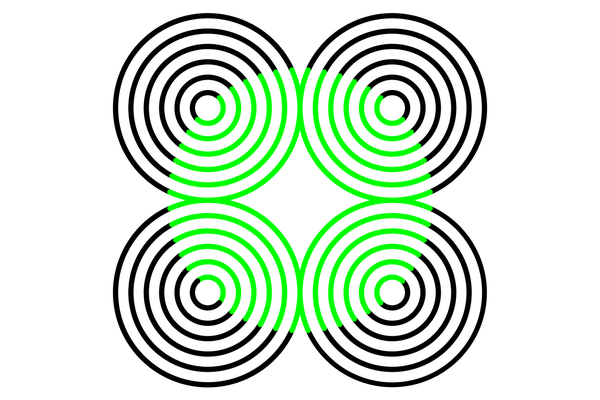Studying Mouse Reactions to an Optical Illusion Can Teach Us about Consciousness
A study of mice starts to unravel how the brain gets tricked by a particular optical illusion
The new study investigated the perception of brightness in mice by looking at how they responded to an optical illusion called the neon-color-spreading illusion, an example of which is illustrated above.
Optical illusions play on the brain’s biases, tricking it into perceiving images differently than how they really are. And now, in mice, scientists have harnessed an optical illusion to reveal hidden insights into how the brain processes visual information.
The research focused on the neon-color-spreading illusion, which incorporates patterns of thin lines on a solid background. Parts of these lines are a different color — such as lime green, in the example above — and the brain perceives these lines as part of a solid shape with a distinct border — a circle, in this case. The closed shape also appears brighter than the lines surrounding it.
It’s well established that this illusion causes the human brain to falsely fill in and perceive a nonexistent outline and brightness — but there’s been ongoing debate about what’s going on in the brain when it happens. Now, for the first time, scientists have demonstrated that the illusion works on mice, and this allowed them to peer into the rodents’ brains to see what’s going on.
On supporting science journalism
If you’re enjoying this article, consider supporting our award-winning journalism by subscribing. By purchasing a subscription you are helping to ensure the future of impactful stories about the discoveries and ideas shaping our world today.
Specifically, they zoomed in on part of the brain called the visual cortex. When light hits our eyes, electrical signals are sent via nerves to the visual cortex. This region processes that visual data and sends it on to other areas of the brain, allowing us to perceive the world around us.
The visual cortex is made of six layers of neurons that are progressively numbered V1, V2, V3 and so on. Each layer is responsible for processing different features of images that hit the eyes, with V1 neurons handling the first and most basic layer of data, while the other layers belong to the “higher visual areas.” These neurons are responsible for more complex visual processing than V1 neurons.
Until now, scientists have debated the extent to which V1 neurons respond to illusory…
Click Here to Read the Full Original Article at Scientific American Content: Global…

